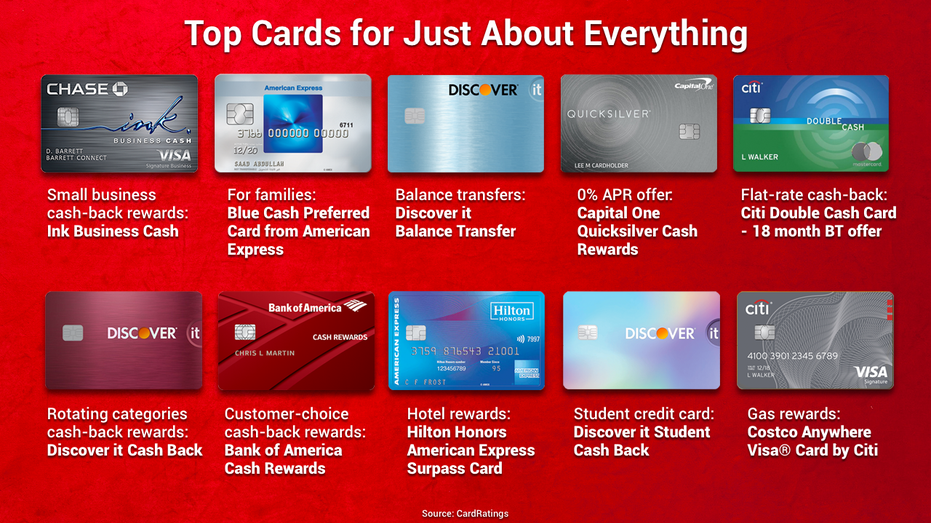Understanding ERP Orders
Understanding ERP Orders
Welcome to the world of ERP orders! If you’re feeling a bit overwhelmed by the complexities of managing orders in your business, you’ve come to the right place. In this article, we’ll break down everything you need to know about ERP orders, from how they work to why they’re so important for your operations. Whether you’re a seasoned pro or just starting out, we’ve got you covered. Let’s dive in and unravel the mystery of ERP orders together!
Definition and Purpose of ERP Orders
ERP orders refer to the electronic documents generated within an Enterprise Resource Planning (ERP) system to request, track, and manage the purchasing and procurement of goods or services. These orders streamline the buying process by providing a standardized way to communicate the need for products or services, as well as specifying the details such as quantities, prices, delivery dates, and supplier information.
ERP orders are essential for maintaining accurate records of transactions, inventory levels, and financial data within an organization. By automating the purchasing process and centralizing all relevant information in one system, ERP orders help businesses improve efficiency, reduce errors, and gain better visibility into their procurement operations.
The main purpose of ERP orders is to facilitate seamless communication between different departments involved in the procurement process, including purchasing, finance, inventory management, and suppliers. By using a standardized format and workflow, ERP orders ensure that all stakeholders have access to real-time information about the status of orders, payments, and deliveries.
In addition to streamlining the buying process, ERP orders also help organizations optimize their inventory levels and control costs. By analyzing historical data and trends, businesses can make informed decisions about when and how much to order, minimizing stockouts, excess inventory, and unnecessary expenses.
Another important aspect of ERP orders is their role in compliance and risk management. By enforcing approval processes, audit trails, and security measures, ERP systems help companies adhere to regulatory requirements, prevent fraud, and protect sensitive data related to purchasing activities.
Overall, ERP orders play a critical role in the efficient operation of modern businesses by standardizing and automating the procurement process, improving communication and collaboration among departments, optimizing inventory management, controlling costs, and ensuring compliance with regulations.
Key Features of ERP Order Management Systems
When it comes to managing orders within an organization, implementing an ERP Order Management System can significantly streamline the process and improve efficiency. These systems are designed to handle all aspects of the order-to-cash cycle, from order entry to fulfillment and invoicing. Here are some key features of ERP Order Management Systems:
1. Order Entry: One of the most essential features of an ERP Order Management System is the ability to efficiently enter and process orders. This includes capturing customer information, item details, pricing, and delivery instructions. With an ERP system in place, manual order entry errors are reduced, and orders can be processed quickly and accurately.
2. Real-time Visibility: ERP Order Management Systems provide real-time visibility into the status of orders throughout the entire order-to-cash cycle. This means that all team members, from sales representatives to warehouse managers, can access up-to-date information on order progress, inventory levels, and shipping details. Real-time visibility helps in better decision-making, improved customer service, and faster order fulfillment.
3. Inventory Management: Another integral feature of ERP Order Management Systems is inventory management. These systems keep track of available stock levels, reorder points, and lead times to ensure that products are always in stock and ready for fulfillment. With real-time updates on inventory levels, businesses can avoid stockouts and overstock situations, leading to cost savings and improved customer satisfaction.
4. Automated Order Processing: ERP Order Management Systems automate order processing tasks, such as order confirmation emails, shipment notifications, and invoicing. This automation not only saves time but also reduces errors that can occur during manual data entry. Automated order processing improves order accuracy, speeds up fulfillment, and enhances the overall customer experience.
5. Order Tracking and Reporting: ERP Order Management Systems offer robust order tracking and reporting capabilities. Businesses can track orders at every stage of the process, from order placement to delivery, and generate custom reports to analyze order trends, performance metrics, and customer behavior. With comprehensive tracking and reporting features, businesses can identify areas for improvement and make data-driven decisions to optimize the order management process.
6. Integration with Other Systems: Integration with other systems, such as CRM, accounting, and inventory management software, is another key feature of ERP Order Management Systems. This seamless integration ensures that order data is synchronized across all business functions, eliminating data silos and improving cross-departmental communication. Integration with other systems also enhances workflow efficiency and provides a holistic view of customer interactions and order history.
In conclusion, ERP Order Management Systems offer a wide range of features that can transform the way businesses manage and process orders. From order entry to fulfillment, inventory management, and reporting, these systems provide the tools and capabilities to streamline operations, improve efficiency, and enhance the overall customer experience. By leveraging the key features of ERP Order Management Systems, businesses can drive growth, increase profitability, and stay competitive in today’s fast-paced marketplace.
Benefits of Implementing ERP Orders in Business Operations
Implementing ERP orders in business operations comes with a plethora of benefits that can greatly improve efficiency, accuracy, and overall success. Here are some key advantages of incorporating ERP orders into your business:
1. Streamlined Processes: ERP orders help streamline business processes by centralizing all order-related information in one system. This enables employees to easily access and manage orders, track order status, and communicate effectively with customers. With a centralized system, there is less room for errors and delays, resulting in smoother operations and improved customer satisfaction.
2. Real-time Data Visibility: One of the biggest advantages of implementing ERP orders is the real-time visibility it provides into the business operations. With ERP orders, managers can have access to up-to-date information on order statuses, inventory levels, and customer feedback. This allows for better decision-making, quicker response times to customer inquiries, and the ability to identify and address potential issues before they escalate.
3. Enhanced Customer Satisfaction: By utilizing ERP orders, businesses can enhance their customer satisfaction levels significantly. When customers place orders, they expect a seamless experience from start to finish. ERP orders help ensure accuracy in order processing, timely delivery, and effective communication throughout the order fulfillment process. Customers appreciate transparency and reliability in their interactions with a company, which ultimately leads to increased loyalty and repeat business.
Furthermore, ERP orders also allow businesses to personalize the customer experience by analyzing order history, preferences, and feedback. This data can be used to tailor marketing campaigns, promotions, and product recommendations to better meet the needs and expectations of individual customers. By leveraging ERP orders to enhance customer satisfaction, businesses can build stronger relationships with their customer base and ultimately drive growth and profitability.
4. Improved Inventory Management: Proper inventory management is essential for any business, and ERP orders can play a significant role in optimizing inventory levels and reducing excess stock. By tracking orders in real-time and monitoring inventory levels automatically, businesses can avoid stockouts, minimize excess inventory costs, and improve overall supply chain efficiency. This leads to better cash flow management, reduced storage costs, and increased profitability.
5. Financial Transparency: ERP orders provide businesses with a clear view of their financial health by tracking order costs, revenues, and profitability in real-time. This level of financial transparency enables businesses to make informed decisions regarding pricing, discounts, and promotions to maximize profitability. With accurate and timely financial data, businesses can identify areas of improvement, cut unnecessary expenses, and focus on strategic initiatives that drive growth.
In conclusion, implementing ERP orders in business operations offers numerous benefits that can transform the way a company operates and interacts with customers. From streamlining processes and enhancing customer satisfaction to improving inventory management and financial transparency, ERP orders can help businesses achieve operational excellence and drive sustainable growth in today’s competitive marketplace.
Common Challenges Faced in Managing ERP Orders
When it comes to managing ERP orders, there are several common challenges that organizations often face. These challenges can hinder efficiency, impact customer satisfaction, and ultimately affect the bottom line. Let’s take a closer look at some of the most prevalent issues:
1. Data accuracy: One of the biggest challenges in managing ERP orders is ensuring the accuracy of the data entered into the system. This includes everything from customer information to product details to shipping addresses. If the data is not entered correctly, it can lead to errors in order processing, delays in delivery, and ultimately dissatisfied customers.
2. Integration with other systems: Many organizations rely on multiple systems to manage different aspects of their business, such as CRM, inventory management, and accounting. Ensuring that these systems are properly integrated with the ERP system can be a challenge. If the systems are not able to communicate effectively with each other, it can result in data discrepancies, duplicate entries, and inefficient processes.
3. Order tracking and visibility: Another common challenge in managing ERP orders is tracking and visibility. Organizations need to be able to track the status of orders in real-time, from the moment they are placed to when they are delivered to the customer. Without proper visibility into the order fulfillment process, it can be difficult to identify bottlenecks, address issues, and provide accurate delivery estimates to customers.
4. Managing returns and exchanges: One of the most complex challenges in managing ERP orders is handling returns and exchanges. When a customer wants to return a product or exchange it for another item, the process can be time-consuming and labor-intensive. Organizations need to have clear policies and procedures in place for handling returns, as well as systems in place to track the status of returned items, process refunds, and update inventory levels.
5. Order prioritization: In a high-volume business, it can be challenging to prioritize orders based on factors such as order size, customer urgency, and product availability. Without a clear system in place for prioritizing orders, organizations may struggle to meet customer expectations, fulfill orders in a timely manner, and allocate resources effectively.
In conclusion, managing ERP orders comes with its own set of challenges that organizations must navigate in order to maintain efficiency and customer satisfaction. By addressing issues such as data accuracy, system integration, order tracking, returns management, and order prioritization, organizations can streamline their operations and improve their overall order management processes.
Best Practices for Streamlining ERP Order Processes
Implementing the best practices for streamlining ERP order processes can significantly improve efficiency and accuracy in your business operations. Here are five key strategies to consider:
1. Standardize Order Entry Procedures
Establishing standardized order entry procedures ensures that all employees follow the same process when entering orders into the ERP system. This helps minimize errors and ensures consistency in data entry. Providing training and clear guidelines for order entry can also help streamline the process and improve overall accuracy.
2. Use Automated Order Processing
Utilizing automated order processing functionality within your ERP system can help reduce manual tasks and improve processing speed. By setting up automated workflows for order processing, you can streamline the entire process from order entry to fulfillment. This not only saves time but also reduces the risk of errors associated with manual data entry.
3. Integrate Sales and Inventory Data
Integrating sales and inventory data within your ERP system can provide real-time visibility into stock levels and order status. This allows you to make informed decisions regarding order fulfillment and inventory management. By having accurate and up-to-date information at your fingertips, you can prevent stockouts, reduce lead times, and improve customer satisfaction.
4. Implement Mobile Order Entry
Enabling mobile order entry capabilities for your sales team can improve efficiency and speed up the order processing cycle. With mobile access to the ERP system, sales representatives can enter orders on the go, providing customers with quick and easy service. This not only reduces processing time but also enhances the overall customer experience.
5. Provide Self-Service Order Options
Offering self-service order options for customers can streamline the order process and reduce the workload on your internal team. By setting up a customer portal or e-commerce platform integrated with your ERP system, customers can place orders, track shipments, and manage their accounts independently. This not only improves customer satisfaction but also frees up your team to focus on more strategic tasks.
By incorporating these best practices into your ERP order processes, you can optimize efficiency, accuracy, and customer satisfaction. Whether you’re looking to reduce processing times, minimize errors, or improve overall visibility, implementing these strategies can help you streamline your operations and achieve better results.






